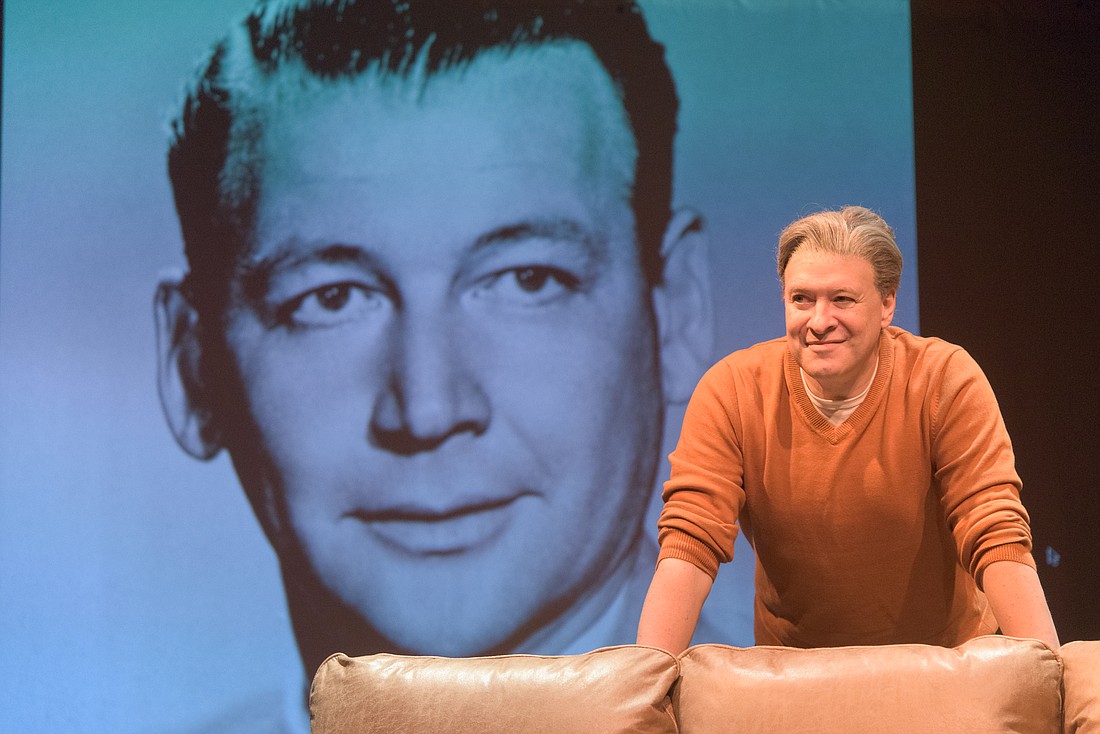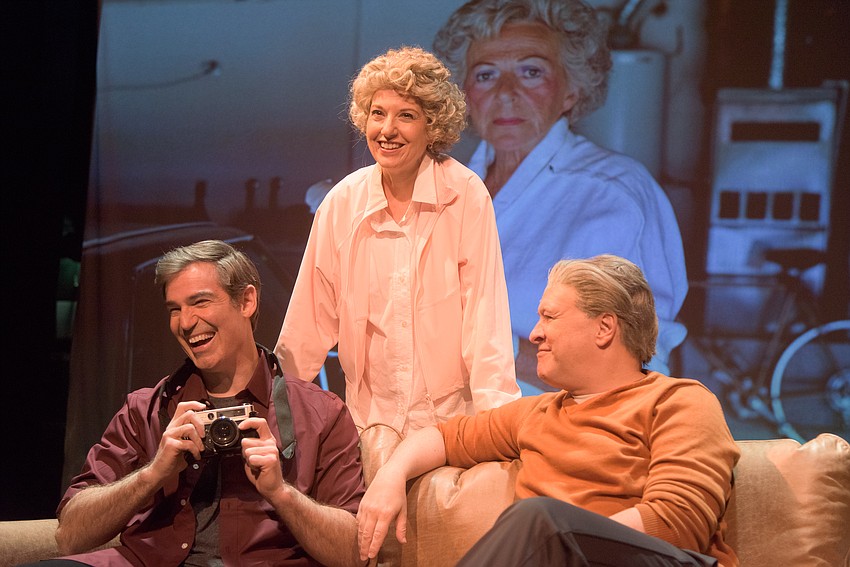- July 26, 2024
-
-
Loading

Loading

“Pictures from Home” is now in focus at Florida Studio Theatre. Sharr White’s play is an adaptation of Larry Sultan’s photo memoir of the same name. But “adaptation” falls short of describing this metafictional Mobius strip. Let’s start with the source material. In the ’80s, the photographer Larry Sultan had relentlessly documented his parents’ lives — with a special focus on his father.
To that end, Sultan recorded interviews, took staged and candid photos, and pulled stills from his father’s Super 8 home movies. Those words and images formed the basis of Sultan’s book and the companion exhibition at the Los Angeles County Museum of Art. He noted that, “Photographing my father became a way of confronting my confusion about what it was to be a man in this culture. I wanted to puncture this mythology of the family and to show what happens when we are driven by images of success.”
Sultan set out to deconstruct his father’s impossible American dream; he wound up raging against the dying of his father’s light. His photo memoir wasn’t one-sided. It included his father’s gripes about his slanted narrative. White turned that into a story about storytelling — and the wrestling match for control of one’s public image. In the following interview, he shared the rest of the story.

I live in New York with my wife and two boys. But in 2015 I was in L.A., writing scripts for “The Affair” on Showtime. I was away from my family, on set, and miserable. A friend of mine out there said I should see the Larry Sultan photography retrospective at Los Angeles County Museum of Art. “Pictures from Home” was part of the exhibition, along with the companion book — so that was my first experience of Larry’s memoir. I knew right away that it’d be great material for a play.
Not exactly. The text accompanying the photographs really captured me. Los Angeles County Museum of Art had printed the dialogue between Larry and his parents on the wall. I realized that the words and images didn’t always agree — especially in Irving’s responses. Larry’s narrative was side-by-side with his father’s narrative. The clash between the two made the meaning of Larry’s story ambiguous. That intrigued me.
Larry’s book begins as a narrative exploring the life of his father, Irving, who was a salesman. As Larry frames it, his father had this image of success that was very important to uphold his entire life. He’d shot all these home movies — and they were obviously the father's image of their family — his father's narrative of the family — and an expression of his own self-image. And Larry was going through this material at the height of the Reagan years — when wholesome family values was an inspirational symbol by resurgent conservatives. That’s how his father wanted the world to see him. Irving’s public image was totally in line with that.
Yes, exactly. So, Larry selected photographs of his father from his career and stills of home movies. In making those choices, the son was saying something about the father without directly saying it.
Yes. He was building a case against his father's aggressive masculinity and his really volatile nature. So that was the son’s narrative. But his father pushed back — and that dialogue’s part of the book. Irving would say things like, “All I know is that you have some stake in making us look older and more despairing than we really feel. I really don’t know what you are trying to get at.” LACMA had printed the dialogue between Larry and his father on the gallery wall. So, I think Larry began by building a case; in the end, he was saying, “I also love you.” I found that all really compelling — and I knew the material had the makings of a play.

Not immediately. My friend at the time thought I was bonkers. But I’d bought a copy of the book. When I flew back to see my family that weekend, I wrote notes on the pages. I wound up writing the first scene — or what would become the first scene. But how do you turn a book of photographs into a drama? I didn’t know where I’d go with it yet.
I thought I’d be done by the end of that summer of 2015. Umpteen revisions later, I workshopped a penultimate draft in January 2020, at the Alley Theatre’s All New Festival in Houston. We officially opened in January 2023 at Studio 54 in New York City.
At a very basic level, Larry is a younger male who’s challenging an older male about the family narrative — often in the presence of the female. So, ownership of image is the key conflict. Irving’s saying, “They’re your photographs, but it’s my image.” And Larry’s parents could be totally dismissive. As an artist, he endured constant rejection and family tension while he was putting this project together. Yet his parents were game at the same time. His mother and father agreed to be photographed, to pose, to recreate a scene, and to be interviewed. Whose image is it anyway? That’s what they fought about — but in a very ambivalent way.
Absolutely. And defining the ownership of the image can be nightmare! But I couldn’t avoid it. As a playwright, I’m fictionalizing Larry’s story. But his photographs are integral to the story, and I still have to recreate those images, and that’s a rights issue.
After contacting the Sultan estate, I sent a long, passionate email to Larry’s widow, Kelly Sultan. We had several very emotional conversations. In the end, Kelly pledged the support of the estate. I also had the support of Larry’s wonderful friends — a few great artists and documentary filmmakers he’d designated as a sort of artistic brain trust. Larry’s family and friends supported my artistic endeavor. They were all on my side — and that really meant a lot to me.